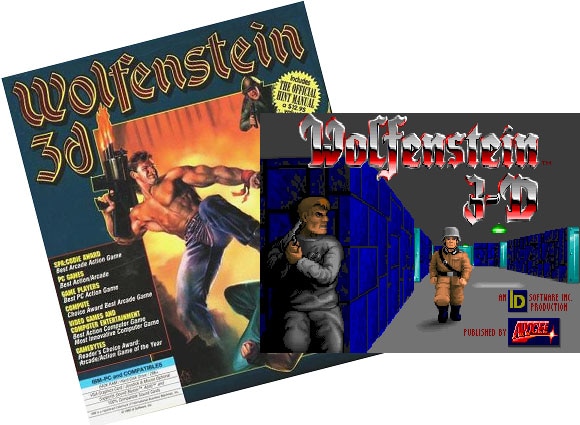
Today, May 5, it is 20 years since the first version of “the grandfather of 3D shooters” – Wolfenstein 3D – was released. In the two decades since 1992, can you imagine how many hours gamers around the world have spent with that game, not to mention its successors like the Doom and Quake series of games?
But what may not be as well remembered is that Wolfenstein 3D helped pioneer shareware as a distribution model for games and other software. This turned out to be incredibly important in a period when users were moving from BBSs (Bulletin Board Systems) to the Internet as a place to get their software.
Although Wolfenstein 3D was not the first game to carry the Wolfenstein label, it was arguably the one that made the name famous. It was also the first one that John Carmack and id Software worked on, as well as widely regarded as the game that popularized first-person shooters.

Wolfenstein 3D starts with the introduction:
“You stand over the guard’s body, grabbing franticly for his gun. You’re not sure if the other guards heard his muffled scream. Deep in the belly of a Nazi dungeon, you’ve only a knife, a gun, and your wits to aid your escape.”
After that, it’s up to you, taking on the role of Captain William J. “B.J.” Blazkowicz, to escape Castle Wolfenstein and make sure you successfully tackle all the hurdles you will face.
With today’s standards, it’s easy to look at Wolfenstein 3D and smile, perhaps even laugh. The ceiling was one solid color, as was the floor. Sprites and textures were blocky and repetitive, but game play was nonetheless exciting and fun. But remember, this game came out just three years after the Intel 486 was launched.
Clearly, Wolfenstein 3D has had an immeasurable impact on the gaming industry over the last 20 years, not the least in terms of its distribution and sales model.
Id software distributed Wolfenstein 3D as shareware. Basically, the game including the first 10 levels were completely free for anyone to download, play, and share with others. If you wanted to buy the full game, it was available through the distribution company Apogee (now 3DRealms).
Giving away a limited version of the game for free and encourage further distribution helped spur on sales. By the end of of 1993, 100,000 copies of Wolfenstein 3D had been sold.
And, yes, quite a few of those copies were sold to geeks who now work at Pingdom.
You can still download and play Wolfenstein 3D. You may also need DOSbox. The game is also available on Steam. Finally, id Software released the source code to Wolfenstein 3D.
So whether you played Wolfenstein 3D way back when or not, why don’t you go ahead and put a few more hours into escaping from the castle? At least now, if someone says something, you can say you’re simply researching computer history. 🙂
























